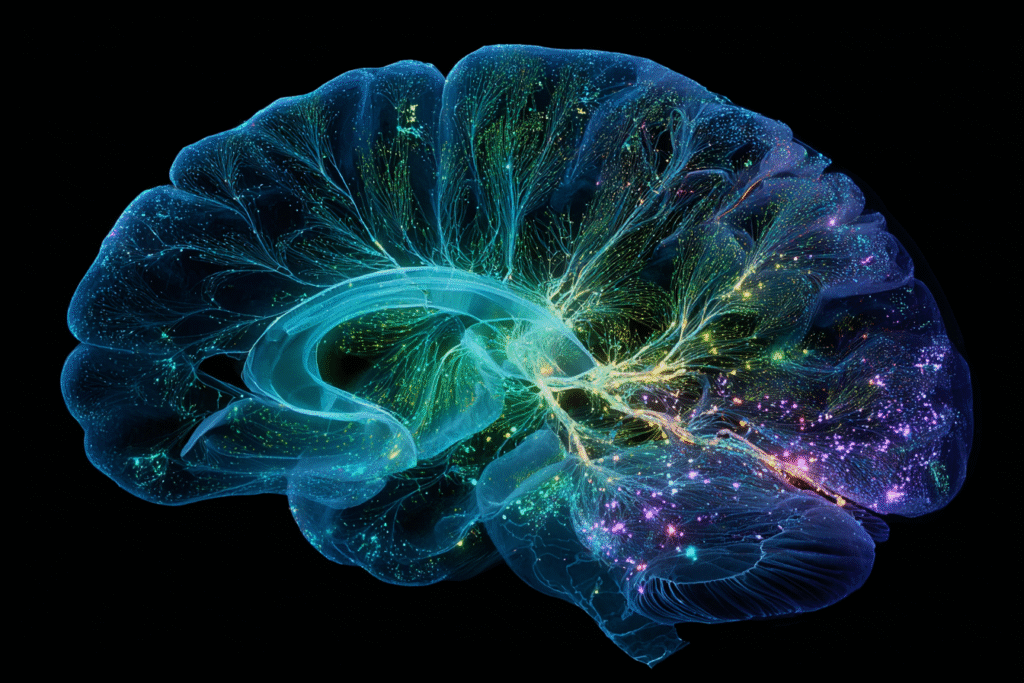You came into this world complex, adaptive, and sensitive…
User manual not included.
Most of us spend years trying to decode ourselves using tools that were never designed for living systems.
At some point, you’ve probably said it to yourself:
“I’m doing everything right. So why isn’t it working?”
You’ve tightened your routines. Optimized your meals. Dialed in your supplements, your workouts, your calendar. You’ve read the books, followed the data, hit your targets—and yet, something still feels… off. Flat. Fatigued. Misaligned. Like the system’s running, but something’s missing.
In those moments, it’s tempting to fall back on the metaphor we’ve been taught all our lives:
“Maybe I just need a reset.”
“I should push through.”
“I need to be more disciplined.”
“I must be broken.”
But here’s the truth no one tells you loudly enough:
You are not broken, you are not a machine. You were never meant to be one. And treating yourself like a machine, one that simply needs fuel, output, optimization, or maintenance, might be the very reason you feel like you’re out of alignment.
You’re not a collection of isolated parts. You’re a living, breathing, dynamic system.
And systems don’t break the way machines do. They slowly drift. They fall out of balance. They go quiet. They adapt to their environment in ways you don’t always notice—until you do.
The Limits of Mechanistic Thinking
We live in a world that loves to compare people to machines.
You see it in wellness culture: “Fuel your body like a high-performance engine.”
In productivity advice: “You’re a machine—just get it done.” Even in how we talk about emotions: “Rewire your brain.” “Hack your habits.”
At first glance, this language feels empowering. It makes us feel in control, like if we just press the right buttons in the right sequence, we’ll get the result we want. Add the right inputs, tighten the bolts, upgrade the software, eliminate the bugs.
But over time, this way of thinking wears thin. Especially when you’re doing everything “right” and still not getting the outcome you expected.
Why? Because machine-thinking assumes predictability—same inputs, same outputs, every day, no exceptions.
But humans don’t work that way. We’re layered. Rhythmic. Responsive. Interconnected. We aren’t designed to be consistent in the way machines are—we’re designed to adapt, to evolve.

Think about it this way: If your car won’t start, you check the battery, the fuel, the ignition. If those are fine, you know something specific is broken, and you fix that part—it’s linear and predictable.
But if a forest ecosystem is struggling, you can’t just “fix the trees.” You have to understand the soil, the water cycles, the wildlife, the seasonal patterns, how they all interact. You might discover that the real issue started with something seemingly unrelated—like a change in rainfall patterns three seasons ago that shifted the entire balance.
That’s the difference.
Machines have problems. Systems have patterns.
And you—your energy, mood, health, clarity—you’re much more forest than Ford Fiesta.
And so when things stop working, the answer isn’t to double down on discipline or force another reset.
It’s to step back and ask a different kind of question:
What’s going on in the system of me?
That single question, curious rather than critical, marks a turning point. It shifts the lens from fixing to understanding, and that’s where systems thinking begins.
Systems Thinking: A Better Lens for Clarity
If machine-thinking leads to burnout, systems-thinking leads to clarity.
Systems-thinking starts with a simple premise:
“Nothing exists in isolation. Everything affects everything else.”
In a system—whether it’s a rainforest, a city, or your own body—every part is influenced by the others. Change one variable, and you may see ripple effects you didn’t anticipate. Some are immediate. Others may take time. But none happen in a vacuum.
This is the butterfly effect in action—small, seemingly minor inputs like what you eat, when you move, or how often you pause can send meaningful ripples through your entire system.

This lens is especially powerful when it comes to health.
Let’s say you feel exhausted. The mechanistic approach might say: “Add caffeine, sleep more, push through.” But the systems thinker zooms out. They ask:
- What’s changed in my environment?
- How is stress interacting with my digestion?
- What feedback loops might be keeping me stuck?
Because that exhaustion may not be about energy output at all. It might be a regulatory issue—a signal that something upstream is affecting everything else.
Maybe it’s unprocessed stress from last month’s deadline that’s still circulating through your nervous system. Maybe it’s an unresolved conversation that’s creating background tension, subtly affecting your sleep quality and decision-making energy. Maybe it’s joy you haven’t allowed yourself to feel fully, creating a kind of emotional congestion.
Emotions don’t sit quietly in some ‘feelings’ folder—they ripple, echo, and embed themselves into your chemistry, your digestion, your immunity, and more. What goes unexpressed doesn’t disappear—it embeds itself in your system until it’s addressed.
This is why systems thinking is so powerful for health. It recognizes that your exhaustion might have nothing to do with your workout routine and everything to do with what you haven’t said, felt, or processed.
“Systems don’t break down the way machines do.”
Systems drift—gradually adapting around strain, often stabilizing into patterns that feel normal but aren’t optimal.
Which means the goal isn’t to “fix” yourself. It’s to understand the system you’re running—and guide it gently back into sustainable balance.
Once you begin to see yourself as a system, the next step isn’t to control it—but to learn how to work with it.
Mental Models to Understand Your System
Mental models are distilled ways of seeing how the world works. They’re not rules—they’re lenses. And the right lens can change everything.

Here are three of my favorite models that can help you decode your own system:
1. Feedback Loops
At the heart of every system is feedback: information flowing in and out, reinforcing (positive) or correcting the path (negative).
Despite the names, “positive” feedback doesn’t mean good, and “negative” doesn’t mean bad. Positive loops amplify change or trends, while negative loops regulate and stabilize the system.
- Positive feedback example:
Stress → Poor sleep → More stress - Negative feedback example:
Rest → Restored energy → Lower cortisol → Clearer thinking
Pay attention to which of these loops you tend to fall into and how they reinforce or shift your momentum.
Are you spiraling upward or downward?
What’s reinforcing your current state?
Even small practices like mood tracking, journaling, or morning reflection, can turn noise into signals and help you adjust course.
2. The OODA Loop (Observe → Orient → Decide → Act)
Originally developed for fighter pilots, the OODA Loop is now a powerful model for navigating complexity. It’s especially useful in fast-changing or uncertain environments, like modern life.
Here’s how it applies to your system:
- Observe: What do I feel, sense, or notice right now?
- Orient: What patterns or context might be shaping that?
- Decide: Based on this, what feels like the next wise move?
- Act: Try it, then circle back to observe.
This loop keeps you adaptive, grounded, and open. It replaces rigidity with responsiveness.
You’re not chasing perfection, you’re tuning your system in real time.
3. Second-Order Thinking
First-order thinking looks for immediate results.
Second-order thinking asks: “And then what?”
It’s a systems-level habit—thinking through the consequences beyond the next step.
- First-order: “If I skip my workout, I’ll feel better now.”
- Second-order: “If I keep skipping, I lose the rhythm that gives me energy.”
Systems thinkers resist the pull of short-term relief and ask instead:
“What does this choice compound into?”
They play a longer game, because clarity often rewards patience, not impulse. It’s not about judgment—it’s about perspective.
Second-order thinking is how your system considers the future—not just the next move, but its ripple effects across time.
When you think in systems, you stop reacting to symptoms and start tracing them to their source.
These three models don’t just help explain your experience. They give you something to work with—tools that sharpen perception, guide decisions, and reconnect you to your innate intelligence.
They help you stop managing symptoms and start engaging with your system.
Pattern Recognition: AI-Assisted Feedback Loops
The fourth model isn’t traditional—it’s technological. But it captures something powerful about how systems learn and adapt.

Artificial intelligence doesn’t work by having all the answers. It works by recognizing patterns in data over time. It notices what you might miss: the subtle correlations, the delayed connections, the feedback loops that only become visible when you zoom out.
Your wearable notices that your deep sleep drops two days before you feel “off.” Your mood tracking reveals that Sunday anxiety predicts Wednesday fatigue. Your food log shows that what you eat doesn’t just affect today—it echoes through your energy patterns for 72 hours.
This is systems thinking made visible. AI doesn’t tell you what to do—it helps you see what your system is already doing. In a way, your body has always been running a form of pattern recognition—long before technology tried to mimic it.
The real insight isn’t in the technology itself, but in adopting the same approach AI uses: patient observation, pattern recognition, and gentle adjustment based on feedback.
You become your own pattern recognizer… not to optimize like a machine, but to understand like a living system.
AI doesn’t impose meaning—it detects it. And you can, too, once you start listening with system-level ears.
You Are the System
You’re not the operator of some external machine called “your body.”
You are the system.
Your thoughts, your energy, your behaviors, your gut, your breath, your decisions—they don’t operate separately. They interact. They echo. They shape one another in real time.

Which is why breakthroughs don’t always come from pushing harder or trying something new. They often come from changing one small input—and watching the rest respond.
Maybe it’s not about the perfect diet, but finally sleeping eight hours and watching your cravings vanish.
Maybe it’s not about strict discipline—but clearing one source of mental clutter and feeling focus return.
Maybe it’s not about being broken at all—but about realizing you’ve adapted beautifully to survive… and now, you can adapt to thrive.
Don’t overlook your emotional system. Chronic stress, unresolved tension, or repressed emotions don’t stay contained—they circulate. They change your chemistry. They influence your decisions, digestion, sleep, and even immunity.
What goes unexpressed doesn’t disappear; it embeds itself in your system until addressed.
Your clarity isn’t missing. It’s just buried under noise.
And when you treat yourself like a system—one worthy of observation, understanding, and care—that clarity begins to rise again.
Understanding, Not Isolation
Machines break.
Systems adapt and evolve.
When you stop trying to fix yourself like a broken tool and instead learn to read your signals, trace your patterns, and adjust with kindness, you discover a deeper kind of intelligence running quietly beneath it all.
“You’re not here to be efficient.
You’re here to evolve.”
Mental models aren’t quick fixes. They’re frameworks and principles—meant to guide your thinking with clarity, not control it.
The same principles that allow AI to learn from patterns and feedback: observation without judgment, patient adjustment, and trust in emergent intelligence—these are the same principles that can help you evolve your health, habits, and clarity.
Not by doing more, but by learning how to see more clearly, adjust more wisely, and trust the intelligence of your own system.
Next, we’ll turn to how intelligent systems make sense of patterns—and how learning to do the same can expand your clarity from within.
See you in the next insight.


